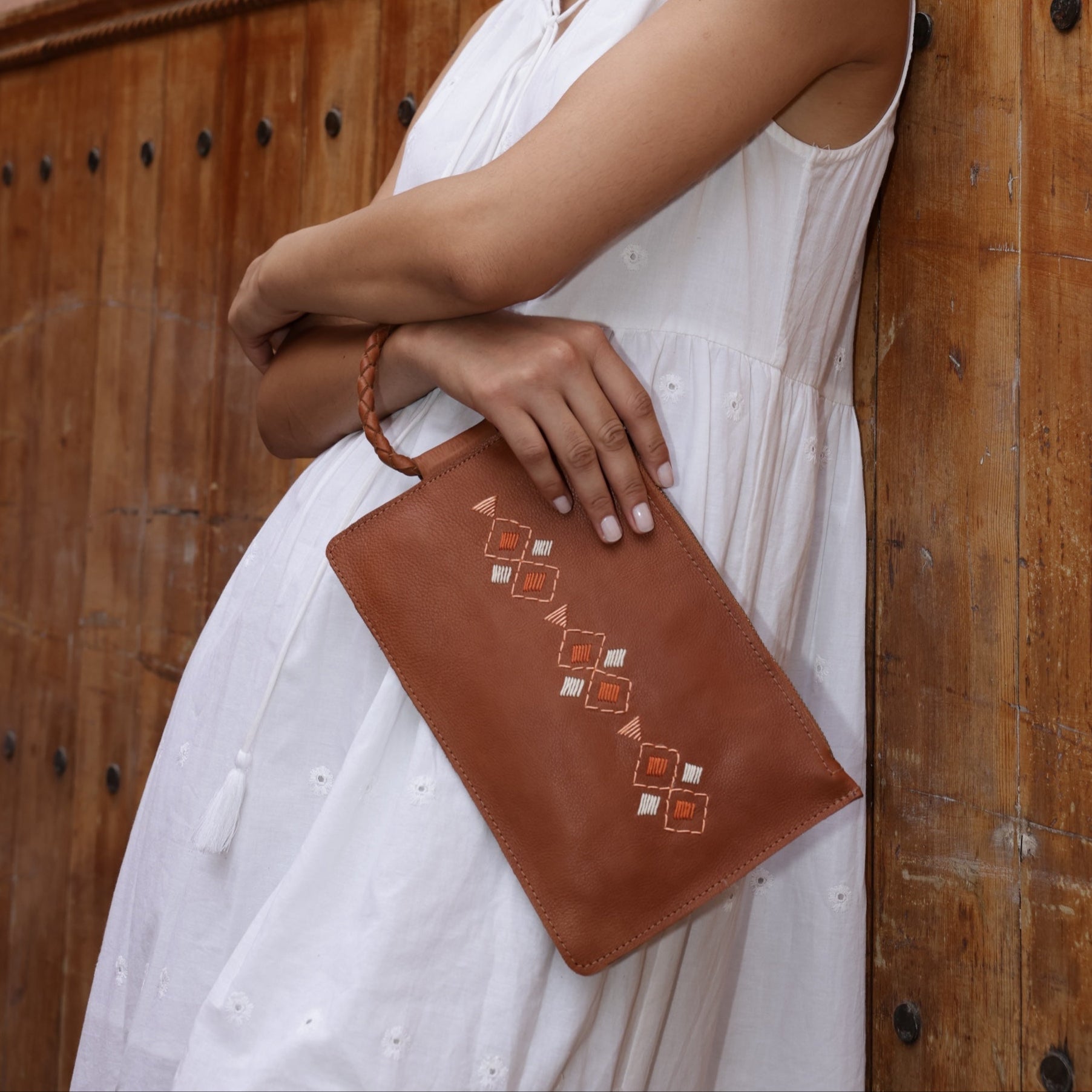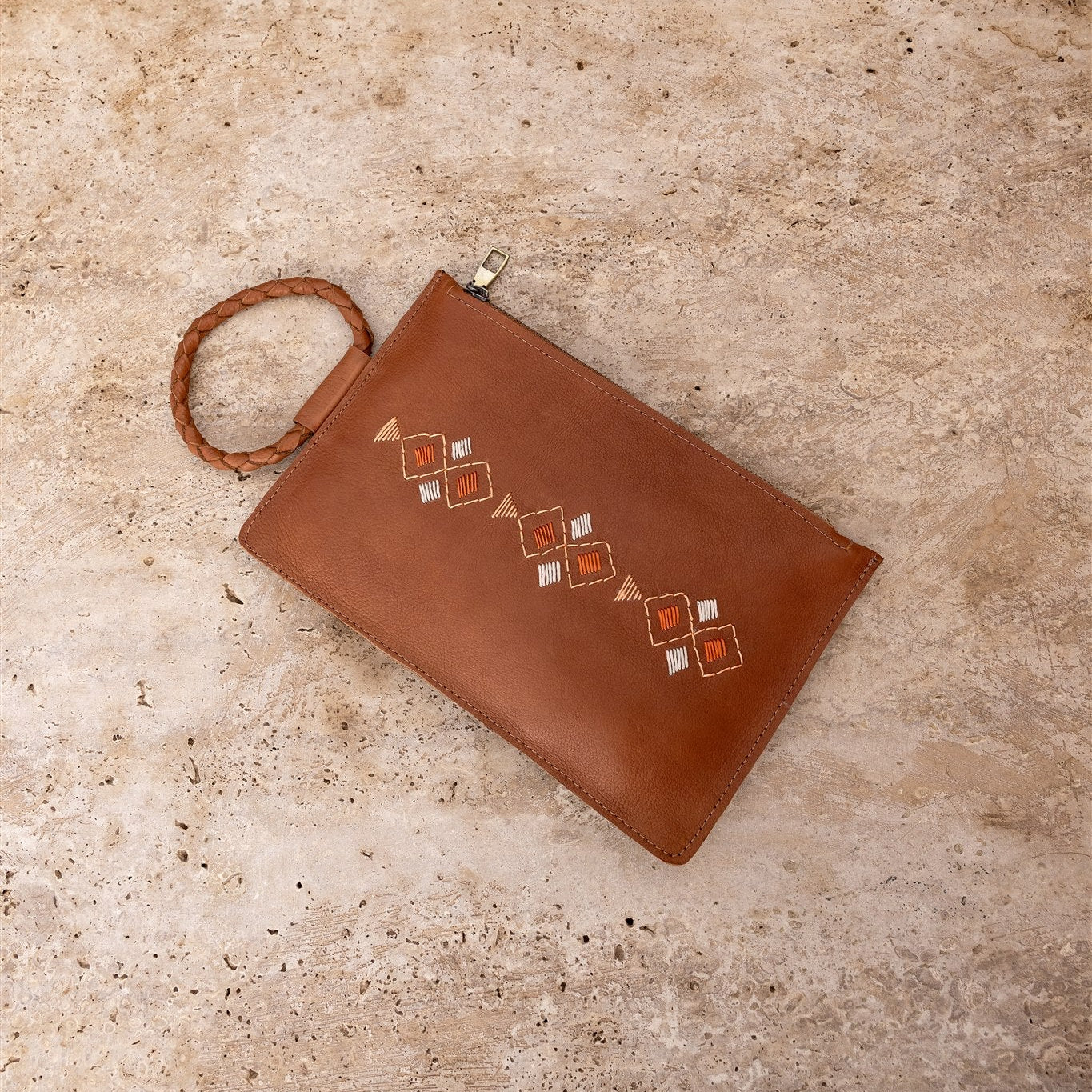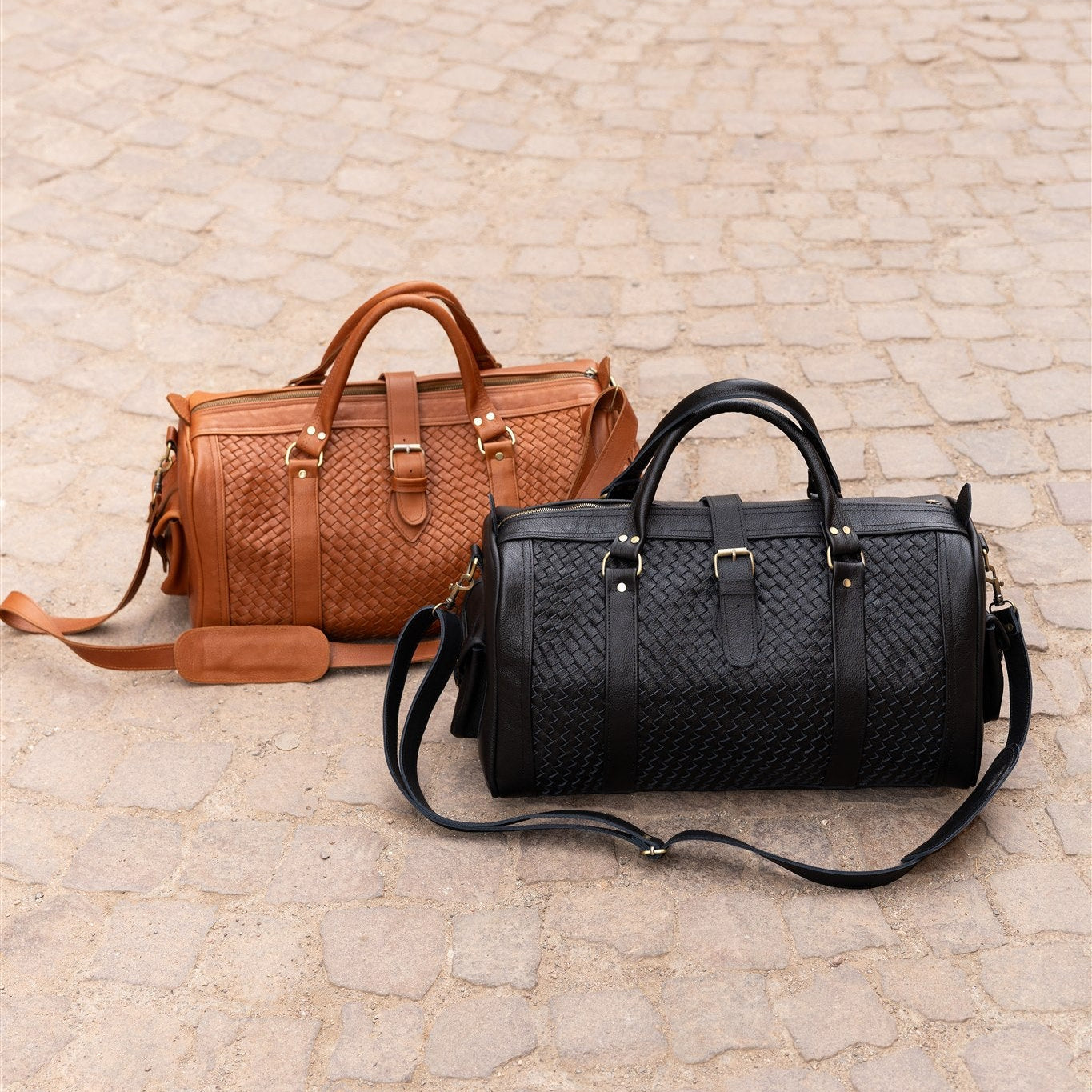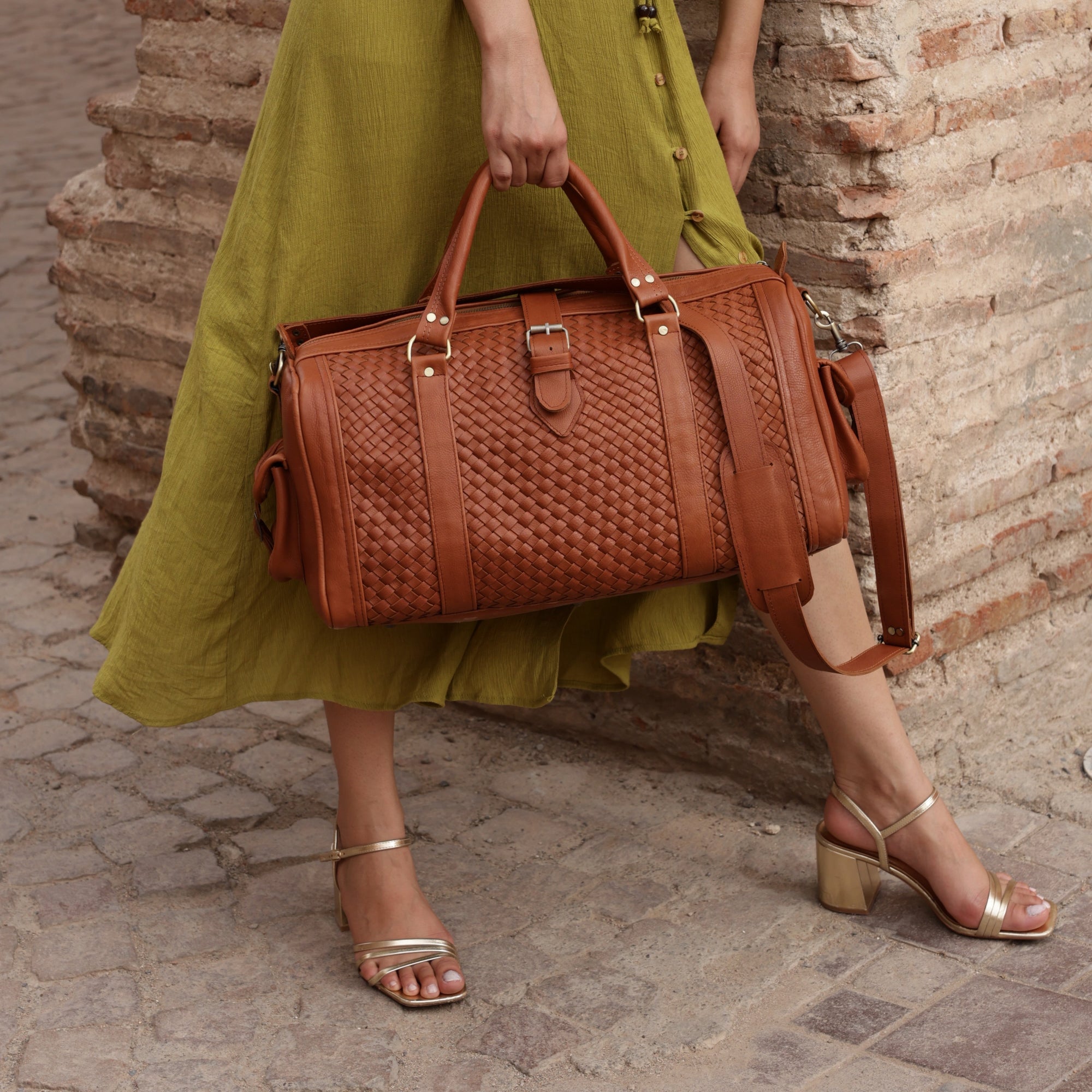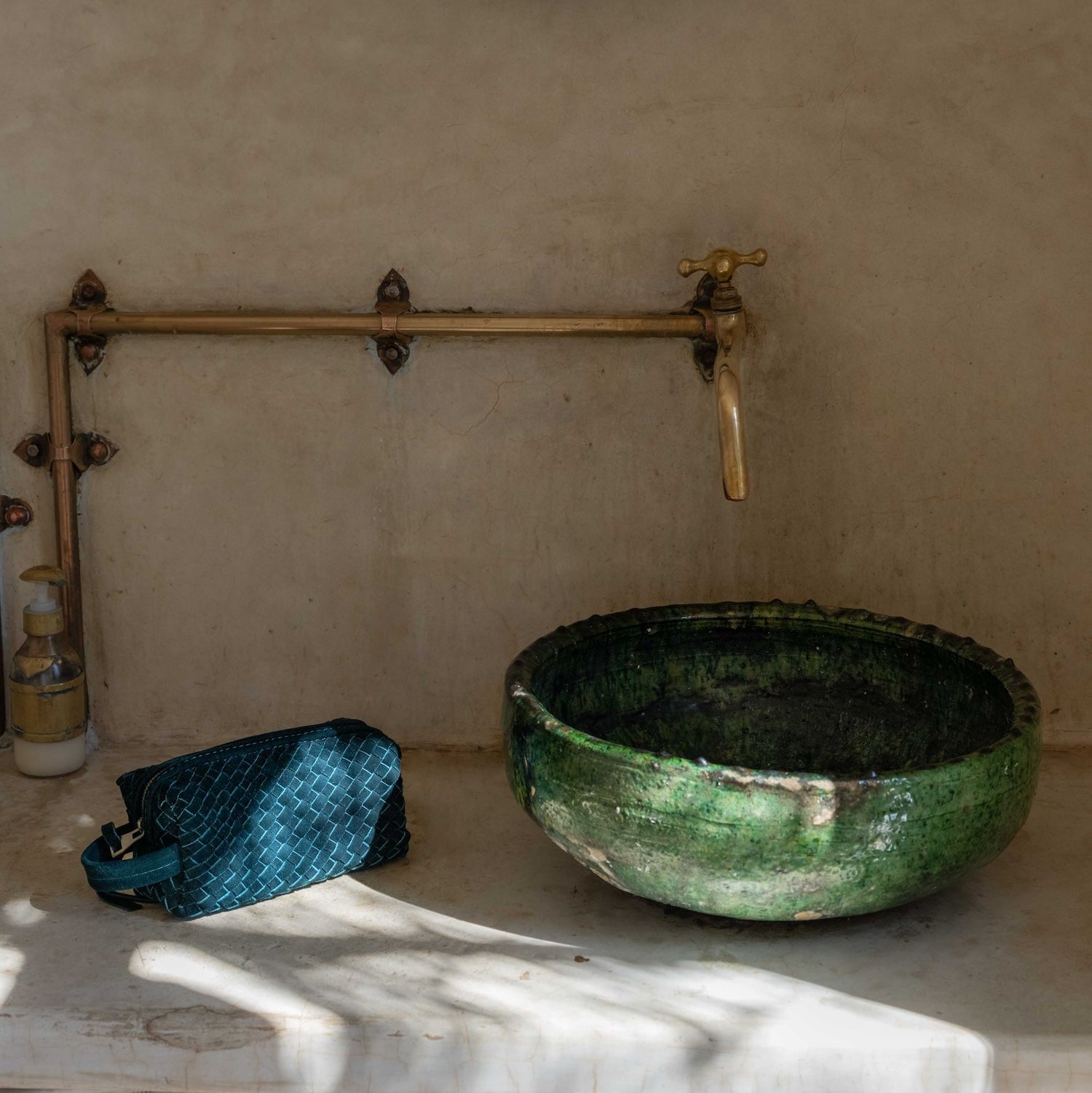Crafting Leather and Empowering Women
At AMASOUK, we are proud to collaborate with artisans who bring incredible skill, passion, and tradition to their craft. One of our most cherished partnerships is with Fano Jild, a female-led cooperative in Morocco that has been redefining leatherworking with a fresh perspective. In this interview, we sat down with one of the founders, Rkia, to discuss their journey, the art of leather crafting, and the impact of their work on the local community. Here’s a closer look at what drives their creativity and success.
How many years have you been working with leather, and what inspired you to start this craft?
I had a background in modern tailoring and sewing, but after I got married, my husband and I moved to an area filled with leather goods shops and workshops. I often noticed that many of the products weren't well made, and with my sewing experience, I thought I could create something more polished and professional.
The first piece I made was a leather pouf, which I sold in the local market. It was well received, and the shop owner asked if I could make a bag. He loved the bag, and soon after, I got another order for the same style. From there, my work took off. My background in tailoring gave me so many ideas, and thankfully, my products were well received from the beginning.
When did you establish Fano Jild, and what was your vision for the brand when you started?
We officially created Fano Jild in 2017. Before that, Souad and I each had our own cooperatives. We met frequently at workshops and exhibitions, and that’s how we decided to start something together. We noticed that while many women were in the industry, they weren’t getting the recognition they deserved. We wanted to create a structure that would not only showcase their work but also provide them with more opportunities to be seen.
Who introduced you to the art of leatherworking, and how did you learn the techniques you use today?
I used to visit leather goods exhibitions, and whenever I saw a new design or handmade detail (like embroidery or braiding), I would ask the artisan to teach me. I’d pay them in return and also signed up for different workshops to hone my skills.
As for Souad, her husband was a master leatherworker who taught her the craft. Fatiha, another artisan in our co-op, learned from her brother, while another woman learned from her husband. It’s been a mix of formal and informal education for all of us.

In your opinion, what is the current state of leatherworking in Morocco, and how has it evolved over the years?
Leather craftsmanship in Morocco has improved significantly. In the past, artisans didn’t focus much on the quality of the raw leather, but there was still a demand for products. Today, customers expect higher quality, which has led to improvements in both the raw materials and the craftsmanship.
The government has also stepped in, regulating the sector and encouraging better quality control. As artisans, we’ve had to adapt to meet these new standards, but it’s ultimately been positive for the industry. The demand for Moroccan leather goods is growing, and we hope that trend continues.
What aspects of leatherworking bring you the most joy and satisfaction?
Our favorite part of the process is when the product turns out exactly as we envisioned. However, there are times when we’re not completely satisfied with a piece—it may feel like something is missing or could have been done differently. But when everything comes together perfectly, it’s incredibly satisfying.
Can you describe the process of creating one of your leather pieces, from the initial idea to the finished product?
We start by sketching the design and taking measurements. Then, we create a cardboard prototype to test the shape and structure. If it works, we move on to the leather. We cut, clean, and press the leather before starting the handcrafting process. Once the product is assembled, we line the interior if needed and add finishing touches.

How do you ensure the quality and authenticity of your leather products?
It all begins with the raw materials. We carefully select leather that’s durable and has a high-quality finish. We also use premium accessories that won’t tarnish over time. Craftsmanship is key—we focus on every detail, from the stitching to the overall structure, ensuring the product holds up well and exceeds customer expectations.
What role does traditional Moroccan culture play in your designs and techniques?
Moroccan culture is rich with intricate patterns and craftsmanship, which deeply influence our designs. We incorporate elements from Moroccan tiles, carved ceilings, and brasswork into our pieces. While customers today prefer more modern designs, they still appreciate subtle Moroccan touches, such as embroidery or traditional braiding.
How do you balance maintaining traditional methods with incorporating modern styles and demands?
While tools have become more modern, we still preserve traditional methods, like hand-stitching and braiding. It’s a balance between keeping our cultural essence alive and adapting to contemporary trends.

Could you share a story about a particularly memorable project or piece you’ve worked on?
Starting a 100% female cooperative was a defining moment for us. In the beginning, male artisans in the souks would make comments, questioning why women were entering the leather industry. It was a challenge, but we were determined to prove that women could not only participate but excel in this field. Today, Fano Jild is respected for our work, and that’s something we’re incredibly proud of.
What is your favorite AMASOUK design, and what makes it special to you?
We love every piece we’ve made for AMASOUK. The collaboration process with Mallory is always smooth, from sourcing materials to receiving her thoughtful feedback. Mallory truly appreciates what we create, and her constructive approach makes working with her a pleasure. It’s become a worry-free process, and we value that relationship.
How do collaborations with brands like AMASOUK impact your work and the local community?
Partnerships like this allow us to maintain high standards while supporting local employment. We work with premium materials and take pride in delivering the best craftsmanship. Collaborations also provide valuable job opportunities for women in our cooperative and beyond, creating a ripple effect in the community.
What are your future goals for Fano Jild and your leatherworking career?
We’re committed to continually improving our work and creating new designs that meet market trends and customer expectations. Our goal is for Fano Jild to be recognized for the exceptional quality of our leather goods and to continue delivering satisfaction to our customers.

At AMASOUK, we are honored to work with artisans like those at Fano Jild, who are not only master leatherworkers but also pioneers in their field. Their passion for their craft and commitment to empowering women inspires us every day. We look forward to continuing our collaboration and sharing their incredible work with the world. Keep an eye on our collection to discover new designs from Fano Jild and other talented artisans!



